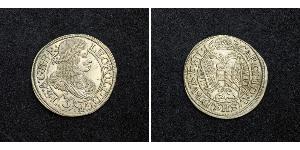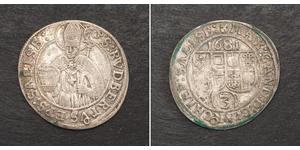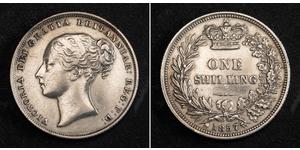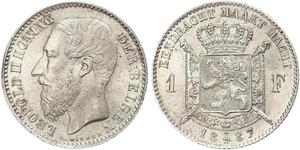(Vendida por $723.0)
1642, Hamburg (Free Hanseatic City). Gold "Virgin Mary" Ducat Coin. PCGS MS-62!
Mint Year: 1642 Denomination: Ducat Condition: Certified and graded by PCGS as MS-62! Reference: Friedberg 1100 ($1300 in XF!), KM-69 ($1000 in XF!). Mint Master: Matthias Freude "the Elder" (privy mark: crossed mint-hooks) Weight: 3.49gm Material: Silver
Obverse: Crowned and draped standing figure of the Virgin Mary (Madonna), holding baby-Jesus child in her arms. Shield with coat-of-arms of Hamburg (castle with three towers) in front of her feet below. All within mandorla which breaks out of inner circle above and below. Legend: ° MONETA . N ° - . O : hAMBVRG ° Reverse: Crowned and draped standing figure of the Virgin (Madonna), holding baby-Jesus child in her arms. Crescent below her feet. All within mandorla which breaks out of inner circle above and below. Legend: (privy mark: crossed mint-hooks) AVE . PLEN . ° - ° GRATA 1642 °
A mandorla is an aureola, or frame, usually in the shape of a vesica piscis, which surrounds the figures of Christ and the Virgin Mary in traditional Christian art. It is distinguished from a halo in that it encircles the entire body, and not just the head. It is commonly used to frame the figure of Christ in Majesty in early medieval and Romanesque art, as well as Byzantine art of the same periods.
Hamburg, officially the Free and Hanseatic City of Hamburg; is the second-largest city in Germany. The official name reflects Hamburg's history as a member of the medieval Hanseatic League and a free imperial city of the Holy Roman Empire. Before the 1871 Unification of Germany, it was a fully sovereign city state, and before 1919 formed a civic republic headed constitutionally by a class of hereditary grand burghers or Hanseaten. Beset by disasters such as the Great Fire of Hamburg, north Sea flood of 1962 and military conflicts including World War II bombing raids, the city has managed to recover and emerge wealthier after each catastrophe.
In 1189 by Frederick I "Barbarossa" granted Hamburg the status of an Imperial Free City and tax-free access up the Lower Elbe into the North Sea. In 1265, a putative forged letter was presented to or by the Rath of Hamburg. This charter, along with Hamburg's proximity to the main trade routes of the North Sea and Baltic Sea, quickly made it a major port in Northern Europe. Its trade alliance with Lübeck in 1241 marks the origin and core of the powerful Hanseatic League of trading cities. On November 8, 1266 a contract between Henry III and Hamburg's traders allowed them to establish a hanse in London. This was the first time in history the word hanse was mentioned for the trading guild Hanseatic League. The first description of civil, criminal and procedural law for a city in Germany in German language, the Ordeelbook (Ordeel: sentence) was written by the solicitor of the senate Jordan von Boitzenburg in 1270. On August 10, 1410 civil commotion caused a compromise (German:Rezeß, literally meaning: withdrawal). It is the considered as the first constitution of Hamburg.

3 Kreuzer Sacro Imperio Romano (962-1806 ...
grupo tiene 11 monedas / 11 precios
Add coin to this group

6 Kreuzer Sacro Imperio Romano (962-1806 ...
grupo tiene 2 monedas / 1 precios
Add coin to this group

15 Kreuzer Sacro Imperio Romano (962-180 ...
grupo tiene 6 monedas / 5 precios
Add coin to this group
1 Shilling Reino Unido de Gran Bretaña e Irlanda (1801-1922) ...
grupo tiene 99 monedas / 92 precios
⇑
1 Franc Bélgica Plata Leopold II (1835 - 1909)
grupo tiene 12 monedas / 10 precios
⇑














-300-150-IxfBwcI07O0AAAEoNYX7lLA7.jpg)








